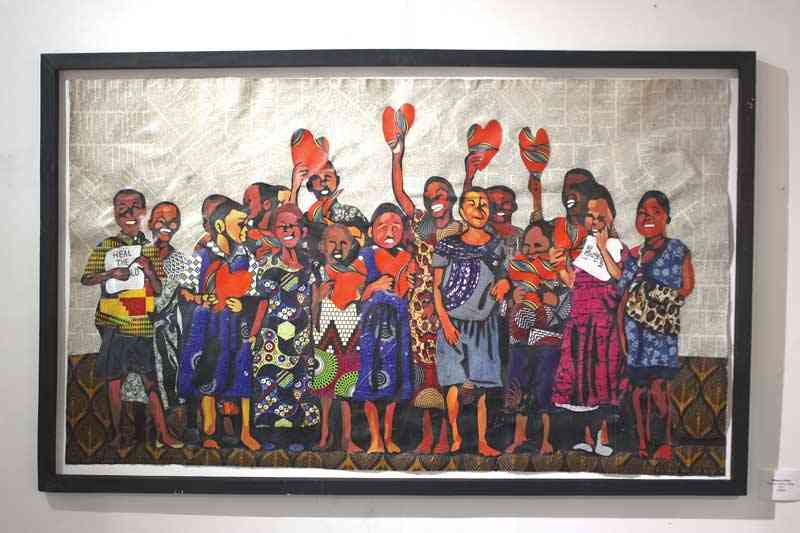
THE common saying that “a picture is worth a thousand words’’ becomes true in Johnson Mugabe’s first solo exhibition, at Artillery Gallery in Harare.
Titled Remind Me When I’m Grown, the exhibition features vibrant collage in which the artist replaced the background to the subject, with a sea of text in most of the work.
Where there should have been trees, buildings, vehicles, animals or crowds, waves of text surround protagonists who fit into various stages of childhood.
One can be tempted to zoom into the text in hopes of discovering a cipher that reveals a secret message.
A larger part of the audience will most likely conclude that the sounding words bear no correspondence to the depicted scenario.
Practically, the fine print serves the purpose of drawing attention to the space it engulfs.
In the age of digital communication, the floating sentences can be likened to information being transmitted across the globe to cellphones, tablets, computers, and television.
Childhood is not a popular theme in contemporary art in Zimbabwe. No other artist since Dominic Benhura’s playful sculptures has created a body of work that exclusively centres on children.
- Mavhunga puts DeMbare into Chibuku quarterfinals
- Bulls to charge into Zimbabwe gold stocks
- Ndiraya concerned as goals dry up
- Letters: How solar power is transforming African farms
Keep Reading
Dismissive of children, most artists are obsessed with effects and conditions resulting from decisions made by the grown-ups.
Mugabe redirects the adult gaze back to the child in whom the future is invested.
His work depicts children at play, and doing small tasks.
It is typically absorbed in the moment the young ones appear oblivious to the social, economic and environmental perils created by their progenitors.
The artist’s inclusion of minors into the conversation mirrors the biblical example of Christ who welcomed back children after they had been shooed away by his Apostles.
Some titles like Mhinduro Rudo sound preachy, but it does not take away anything from the artwork.
Others such as Zvikomo Zvinopana Mhute, are quite evocative.
The latter conjures the image of mountains in the countryside whose peaks are shrouded in mist, which in Shona tradition is seen as sharing of communion.
The proverb is used to encourage collaboration and exchange of progressive ideas. Mugabe’s pictorial version for the saying is a small group of boys seated on a bench with their back to the viewer.
They all have backpacks, which may be assumed to contain schoolbooks. The group of five appears to be a disciplined and studious lot.
Here, Mugabe deliberately steers away from the repeated narrative of youth delinquency and drug abuse in order to underline the positive.
“It is these good qualities that I intend to highlight in my work,” he says.
In the current exhibition, the subject appears to be drowning under a mountain of alphabetical symbols in some artworks.
The misconception is an optical illusion that tricks the eye after the viewer passes a large artwork.
The tendency to maintain distance from the wall makes the smaller work appear to shrink against the wall.
This could have been avoided by gathering the smaller works into groups.
As the viewer moves-in for closer inspection however, the distortion vanishes.
It is these small works that reveal the artist at his best through sensitive observation and rendering of the awkward gait of his immature subjects.
The success of the work is a remarkable feat considering that the up-and-coming artist does not yet have children of his own from whom he might have taken inspiration.
In the true spirit of his subject Remind Me When I’m Grown is a whimsical series of candid moments that do not devolve into advocacy about grown up issues.
Mugabe asserts that he created the work as an act of remembrance to the age of innocence, unconditional love, and total selflessness of childhood, which does not last long.
From a universal perspective the work is a triumphant celebration of African childhood.










